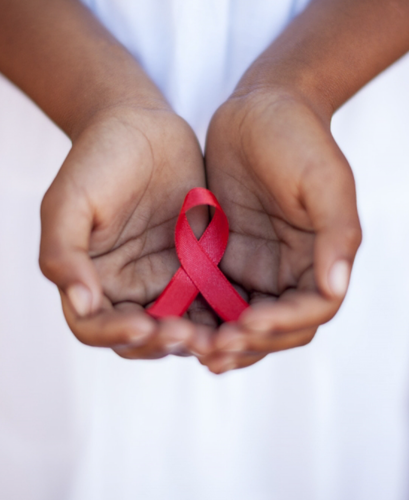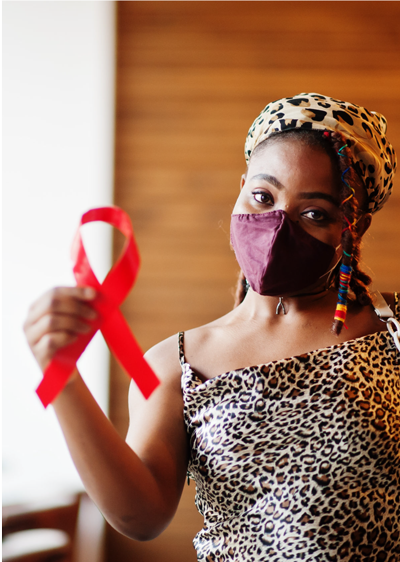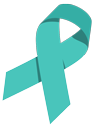
VIH
– What is HIV?
HIV is a virus that infects cells of the immune system, destroying or impairing their function and preventing them from being able to combat infections and diseases.
– What is AIDS?
AIDS or Acquired Immunodeficiency Syndrome is a term applied to the most advanced stage of HIV infection..
– HIV is transmitted through:
 Unprotected sexual intercourse (vaginal or anal) and oral sex with an infected person
Unprotected sexual intercourse (vaginal or anal) and oral sex with an infected person Transfusion of contaminated blood
Transfusion of contaminated blood Sharing of contaminated needles, syringes and similar instruments
Sharing of contaminated needles, syringes and similar instruments Between a mother and her infant during pregnancy, childbirth and breastfeeding
Between a mother and her infant during pregnancy, childbirth and breastfeeding
– HIV is NOT transmitted through:
Ordinary contact (kissing, hugging, or sharing personal objects, food or water).
– What is the feminisation of HIV?
About half of the persons who are HIV-positive worldwide are women. In Sub-Saharan Africa, 76% of young people between the ages of 15 and 24 who are infected are women.
– Why are women more vulnerable?
Inequality and that lack of respect for women and girls’ rights are key factors in the HIV/AIDS epidemic.
– Some of the factors that put women and girls at risk include:
 Lack of adequate access to information, education and sexual health services
Lack of adequate access to information, education and sexual health services Women’s inability to secure access to and negotiate the use of methods that provide protection
Women’s inability to secure access to and negotiate the use of methods that provide protection Male promiscuity
Male promiscuity Sexual violence
Sexual violence Harmful traditional practices that affect the reproductive health of women and girls
Harmful traditional practices that affect the reproductive health of women and girls Lack of equality in family matters
Lack of equality in family matters


How can the risk of HIV infection be reduced?
 Use condoms
Use condoms
The correct use of condoms during penetration can provide protection against the spread of STIs and HIV.
 Get tested and seek advice on HIV and ITSs
Get tested and seek advice on HIV and ITSs
Knowing your serological status will help you to:
- - Take measures before the first symptoms appear (access to treatment, care and support)
- - If you know that you are infected, you can take precautions to stop the spread of HIV.
 Damage limitation for intravenous drug users
Damage limitation for intravenous drug users
Persons who inject drugs can avoid being contaminated if they use only sterile syringes for each injection.
 Prevention of mother-to-child transmission (PMTCT)
Prevention of mother-to-child transmission (PMTCT)
The transmission of HIV from a HIV positive mother to her child is called vertical transmission or mother-to-child transmission. This can be prevented entirely provided that the mother and the child are given antiretroviral drugs (ARV) during all stages during which the infection can occur.
Female genital mutilation, HPV and cervical cancer
– What is female genital mutilation?
Female genital mutilation (FGM) involves removing and damaging normal and healthy female genital tissue by means of instruments such as razors, knives, scissors, blades or pieces of broken glass without anaesthesia. It is a cultural practice that is carried out in many countries to define who belongs to a particular community or when a girl has reached adulthood.
This practice, which causes pain and immediate bleeding, interferes with the natural function of girls’ and women’s bodies.
According to the WHO, between 100 and 150 million women and girls suffer from the consequences of FGM.

VPH
What is hpv?
Human papilloma virus (HVP) is the most common virus affecting the reproductive tract.
How is it transmitted?
HPV is transmitted sexually, and it can only be passed on through genital contact. the moment when individuals are at highest risk is soon after they become sexually active
What is cervical cancer?
Cervical cancer is by far the most common HPV-related disease. It is the secon most frequent type of cancer among women and the third most common cause of famale cancer deaths.
– Signs and symptoms
The symptoms of cervical cancer tend to appear only when the cancer has reached a relatively advanced stage. They may include:
 Irregular or intermenstrual bleeding (between periods), or abnormal vaginal bleeding after sexual intercourse
Irregular or intermenstrual bleeding (between periods), or abnormal vaginal bleeding after sexual intercourse Back, leg or pelvic pain
Back, leg or pelvic pain Fatigue, weight loss, loss of appetite
Fatigue, weight loss, loss of appetite Vaginal discomfort or odorous discharge
Vaginal discomfort or odorous discharge A single swollen leg
A single swollen leg
Risk factors
 Early first sexual intercourse.
Early first sexual intercourse. Multiple sexual partners.
Multiple sexual partners. Tobacco use.
Tobacco use. Immune suppression.
Immune suppression.


Types of screening
 Conventional (Pap) test and liquid-based cytology (LBC)
Conventional (Pap) test and liquid-based cytology (LBC) Visual inspection with acetic acid (VIA)
Visual inspection with acetic acid (VIA) HPV testing for high-risk HPV types.
HPV testing for high-risk HPV types.
– HPV vaccination
There are currently 2 vaccines which protect against some types of HPV, and they work best when administered before the first sexual activity.
WHO recommends vaccination for girls aged 9-13 years as this is the most cost-effective public health measure against cervical cancer.
– HPV vaccination does not replaced cervical cancer screening.
Other preventive measures
 Warnings about tobacco use.
Warnings about tobacco use. Sex education.
Sex education. Promotion and provision of condoms.
Promotion and provision of condoms. Male circumcision.
Male circumcision.
